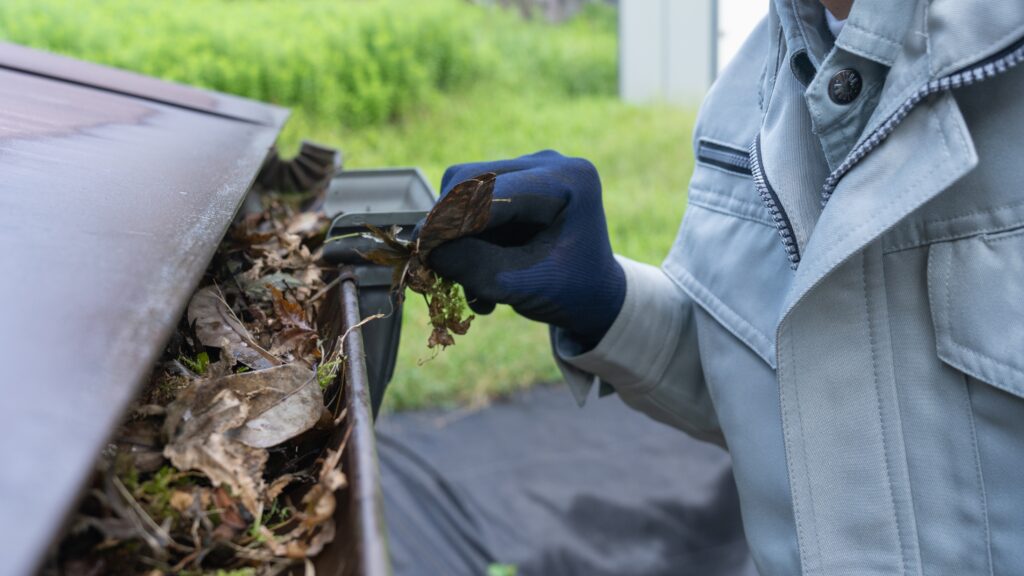How to Prevent and Fix Overflowing Gutters: Expert Solutions for a Leak-Free Home
Overflowing gutters are more than just an inconvenience; they can lead to severe structural damage, foundation issues, and costly repairs. Whether you’re dealing with clogged gutters or poorly installed systems, proactive maintenance and timely fixes are crucial for protecting your home. This guide will walk you through simple ways to stop your gutters from overflowing—and how to fix them if they already are—so you can keep your home dry and damage-free.
Why Do Gutters Overflow?

If your gutters are overflowing, figuring out why is the first step to fixing the problem for good. Here are some of the most common culprits:
- Clogged Gutters – Leaves, twigs, dirt, and debris can accumulate, blocking water flow.
- Poor Gutter Slope – Gutters must be angled correctly to allow water to drain properly.
- Inadequate Gutter Size – Small or narrow gutters may not handle heavy rainfall effectively.
- Faulty Downspouts – If downspouts are blocked or too short, they can’t direct water away from the home.
- Heavy Rainfall – Excessive rain can overwhelm gutters that aren’t designed for high water volumes.
- Improper Installation – Incorrectly installed gutters can sag or pull away from the roof.
- Ice Dams – In colder climates, ice buildup can block water flow and force it under the shingles.
Preventative Measures to Avoid Overflowing Gutters
1. Regular Gutter Cleaning
Keeping your gutters clean is the simplest way to prevent blockages. Experts recommend cleaning gutters at least twice a year—once in spring and again in fall. If you live in an area with heavy foliage, you may need to clean them more frequently.
📌 Tip: Consider hiring a professional gutter cleaning service to ensure thorough maintenance.
2. Install Gutter Guards
Gutter guards prevent debris from entering while allowing water to flow freely. There are different types available:
- Mesh screens – Keep out leaves and twigs while allowing water to pass through.
- Reverse curve guards – Direct rainwater downward while preventing debris accumulation.
- Foam inserts – Block debris but allow water to flow through the foam structure.
3. Adjust the Gutter Slope
Gutters need a slight downward slope (approximately 1/4 inch per 10 feet) toward the downspout to ensure proper drainage. If water pools inside, adjusting the slope can prevent future issues.
4. Check and Extend Downspouts
Ensure your downspouts extend at least 5 feet away from your foundation. If they’re too short, adding extensions will help direct water away from your home’s structure, preventing basement flooding and foundation damage.
5. Trim Overhanging Trees
Falling leaves, twigs, and branches contribute to clogged gutters. Trimming trees around your roof can reduce debris buildup and minimize gutter maintenance.
6. Inspect for Leaks and Weak Joints
Over time, gutter seams and joints may develop small leaks. Applying a waterproof gutter sealant can help prevent water from seeping through.
7. Upgrade to Larger Gutters
If you experience frequent overflowing, consider upgrading to wider gutters (6 inches instead of 5 inches) to accommodate heavier rainfall.
How to Fix Overflowing Gutters
If your gutters are already overflowing, take immediate action with these solutions:
1. Remove Debris and Clean the Gutters
Use a scoop or high-pressure hose to remove blockages. Flush out the downspouts with water to clear any clogs.
2. Repair Loose or Sagging Gutters
Gutters that pull away from the house can cause improper drainage. Secure them with additional brackets or replace damaged hangers.
📌 Need professional repair? Contact a trusted gutter repair service to fix sagging or detached gutters.
3. Seal Small Leaks and Cracks
Use a gutter sealant or caulking compound to fix minor leaks. Apply the sealant inside the gutter along the seams and allow it to dry completely.
4. Unclog or Replace Downspouts
If water isn’t draining properly, inspect the downspouts for clogs. Use a plumber’s snake or hose to clear blockages. If the issue persists, consider replacing the downspout.
5. Address Ice Dams in Winter
If ice buildup is causing overflowing gutters, install heated cables along the roof edge or use a roof rake to remove excess snow before it melts and refreezes.
Long-Term Solutions for Gutter Health
To ensure your gutters remain in top condition, follow these best practices:
- Schedule Annual Inspections – Regular professional inspections help detect issues early.
- Upgrade to Seamless Gutters – Seamless gutters reduce leaks and require less maintenance.
- Ensure Proper Roof Drainage – Check that your roof’s drainage system isn’t directing excessive water into the gutters.
- Invest in a Rainwater Collection System – Redirect excess water into a storage system for eco-friendly reuse.
Overflowing gutters can lead to costly damage, but with the right preventive measures and timely repairs, you can maintain a leak-free home. Regular maintenance, proper installation, and professional inspections will keep your gutter system working efficiently year-round.
For professional cleaning and repair, check out:
✅ Gutter Cleaning Services
✅ Gutter Repair Services
Taking these steps will not only protect your home but also extend the lifespan of your gutter system, saving you time and money in the long run!
